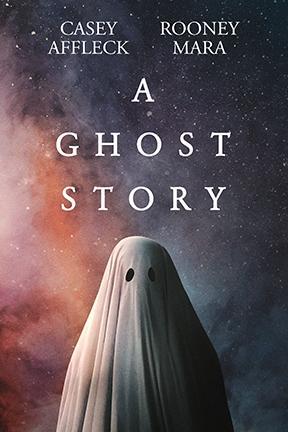Cadenza | Film
‘A Ghost Story’: The film that keeps asking questions
A year ago, I read about the slow death of the universe. One day, all stars will die, protons will decay, matter will disintegrate and black holes will evaporate. The universe will perish.
I spent all night thinking about what I had read. It saddened me. It upset me.
Why? I won’t be around. No one will be. Why did it shake me?
“A Ghost Story” asks a lot of questions. Some of them, the same questions I asked a year ago. It doesn’t have answers for most, if any of them. It meditates on time, grief, love and mortality. Films rarely achieve the hyperboles we bestow upon them. “A Ghost Story” does. Director David Lowery’s film is breathtakingly original, philosophically insightful and both infinitesimal and infinite. It shook me deeply.

Lowery’s film is best discussed in hushed, reverent tones. It’s the rare supernatural film which actually appears supernatural and exists ethereally above film conventions, reality and even its own plot. Please don’t read into the plot of “A Ghost Story” before you see it. Let the film surprise you completely.
All you need to know is that a nameless couple (Casey Affleck and Rooney Mara) lives together. Casey Affleck’s character dies and returns as a ghost. The ghost appears in a bedsheet in what is genuinely inspired costume design. Disclosing the plot any further diminishes the film’s explorative and inquisitive soul.
Lowery tells his intimate story with grace. Every audio-visual element is essential and delicately made. Each component reflects careful thought and conscious decision-making. “A Ghost Story”’s editing, lighting, sound and direction are outstanding.
Despite this, many will avoid the film. This is a film which requires a participatory audience, one willing to project meaning and emotion. Lowery challenges viewers repeatedly. Dialogue is minimal, and the main character spends the majority of the film covered. Lowery holds shots for minutes on end and cuts decades, even centuries, in time. This is a difficult film, but it is also intensely rewarding.
Take, for example, the film’s buzziest scene and certainly one of 2017’s boldest cinematic moments. For nine minutes, the audience observes Rooney Mara’s character eat a pie in real time. Believe me when I say its spellbinding.
Lowery demands viewers ask themselves questions. Why is she eating the pie? Why does Lowery let the shot linger? Why does Lowery film his movie in the squarish 1.33:1 aspect ratio? Why does she eat the pie the way she does, stabbing at it, digging into it, devouring it? “A Ghost Story” necessitates impassioned reflection.
In case it needs clarification, “A Ghost Story” is not a horror film—it is however, a haunting one. At a party, a guest questions the meaninglessness of the universe. He debates the inability of humanity to leave a lasting imprint on time. His dreadful existential ramble goes on and on. It’s scary—just not in the way we usually conceive fear.
Lowery and his crew make the most of the smallest moments. In “A Ghost Story,” every creaking door, every shot of light playing on the wall, every disorienting cut imparts cosmic significance. It is up to you to determine what exactly that significance is.
If you watch this film, give it time to wash over you. Contemplate how it personally affects you. Examine its craft carefully and question its meaning. “A Ghost Story” is an introspective guided meditation. It only works if you join its journey.
I very rarely finish a film and feel compelled to watch it again. David Lowery’s elegiac masterpiece made me feel that way. “A Ghost Story” is beautiful. Let it move you.
